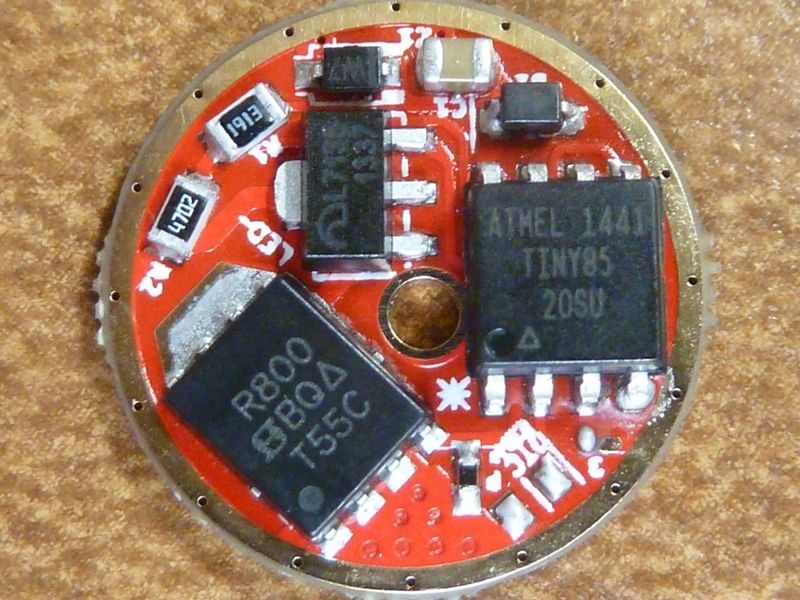Yea, for 17's, I'm using the MtnE drivers exclusively now - got all the parts in, including the 0402 resistor - talk bout small... On the MtnE boards, I use 191K resistors for R1 because the resistors are after the diode, not before, opposite of wight's drivers.
Dutcheee - I hpoe you don't mean in that order as you said: I just flashed the new Narsil with ramp and replaced R1 & R2 with 47K & 220K resistors
R1 should be the 220K, and R2 the 47K. I haven't used the bleed resistor in any of my driver builds, 85 or otherwise.
Here's a pic of a working MtnE driver, the MTN17DDm, v1.1:

This evening, I'll double-check battery level checks on these MtnE boards. Every 85/Narsil I've built with the new ramping support battery check and LVP work fine - I've tested I'd say about 6 working lights so far w/latest Narsil, 3 of which are in SRK style lights, doing 15A to 20A each (3X modded M6, 4X clone, 5X clone).
Last night I just updated my SWM C20C with the ramping version. It blinks out 3.9v and with the cell removed, it measures 4.007v on a Fluke DMM. I consider that close enough, but the driver is a wight driver, so I'm using the 220K/221K resistor for R1.
Important Note: To properly measure parasitic drain, you must hold the probes across the batt- to the housing for several seconds, I think it's about 6-8 seconds. I added this delay to the firmware intentionally - it's a delay before going into sleep mode. I just did this on my C20C light, and measured 0.02 mA, whichs is 0.016 mA rounded to 2 decimal digits. Looks like this Fluke I'm using at work (175 - true RMS DMM) is limited to 2 decimal digits.
I measured 4.85 mA for those first few secs before it drops. The 4.85 mA is probably the MCU's draw in normal running.
![]()
